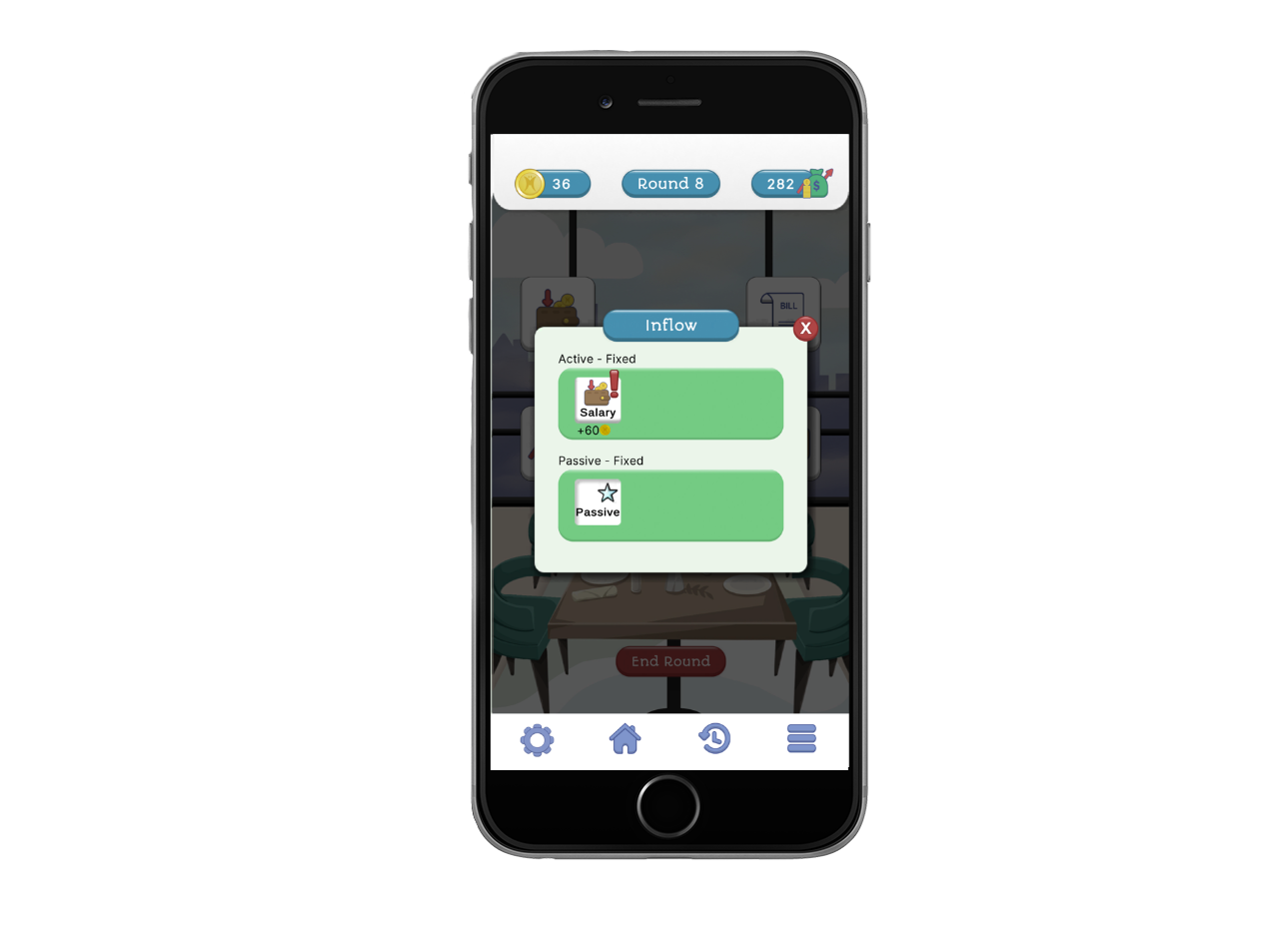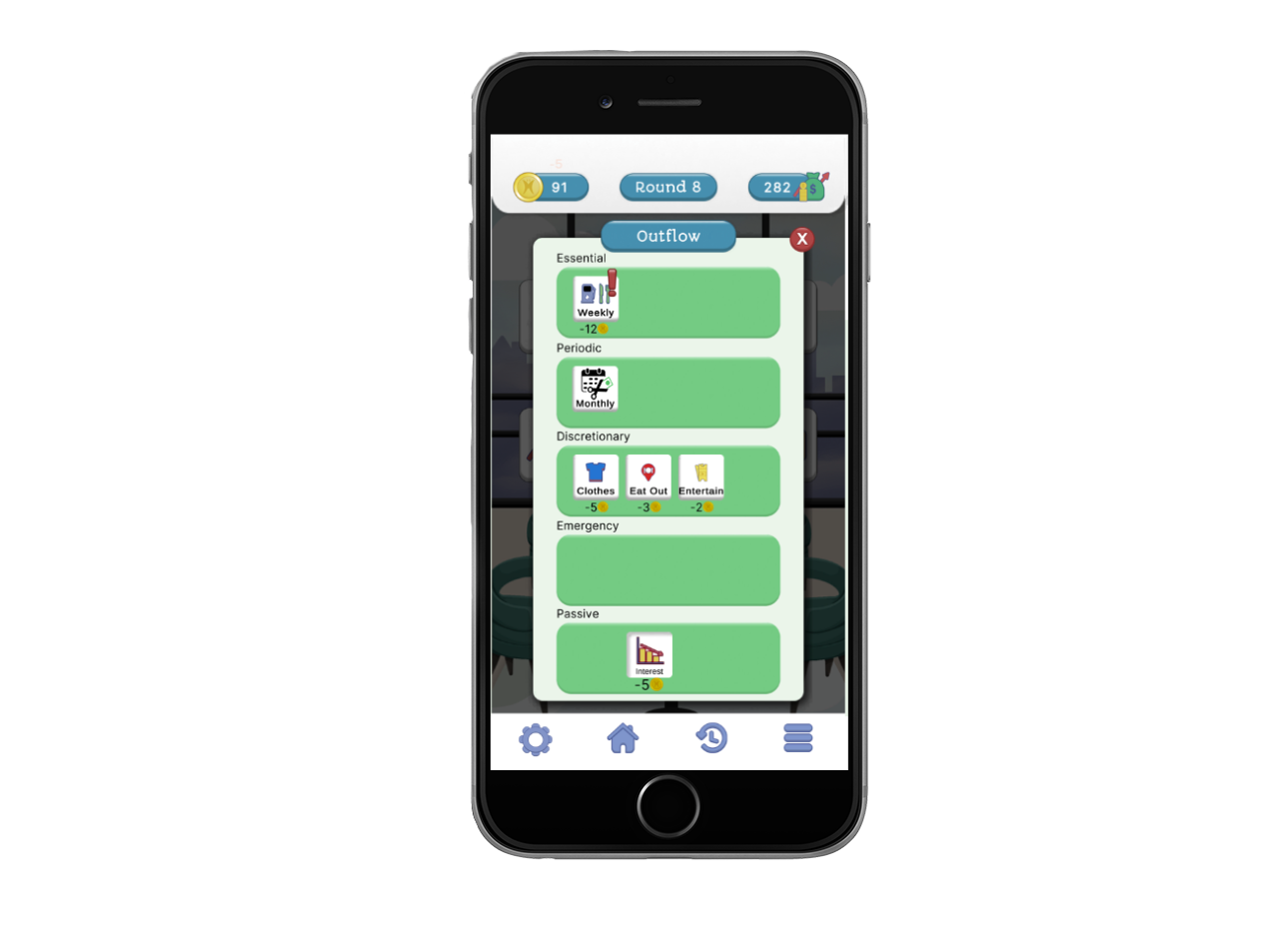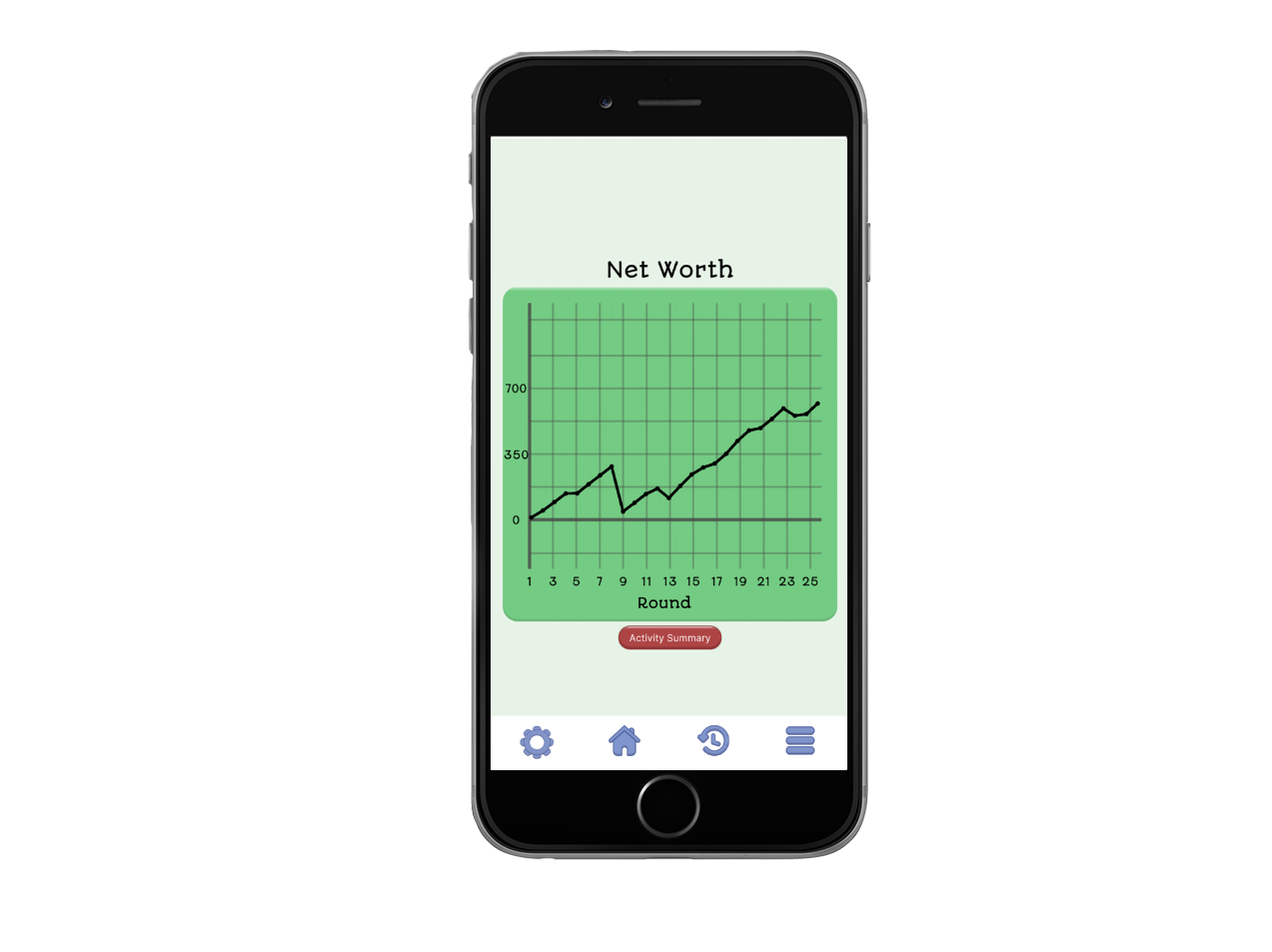About the Game
An Immersive Simulation Game
How to Use Money for Greatest Return
Modern Mobile Education
Watch the Game Presentation Video
About the Game
The MentaMorph Money app uses a powerful gaming format integrating the many aspects of financial decisions to simulate the real-world experience, with numerous scenarios and increasing levels of complexity.

In MentaMorph Money:
- You can play anytime, anywhere.
- You can progress to more levels and enjoy additional releases.
- You can "Morph" into multiple customers, roles, income levels, and market scenarios to show patterns.
- Multiple categories for expenses and assets differentiate where to find the money for savings and investments.
- You can experience how multiple choices affect your financial situation over time - not just once, but over and over.
Market Exploration and Early Success
MentaMorph Money was a finalist in the Pocket Change competition for financial games.
Tabletop Format
This game was first “dreamt up” in a manual scoring format using toothpicks for money and stickers and paper for scoring. It was played with hundreds of adults and teens with tremendous success.


What our Student Testers Said...
In the school delivery shown here, these are some of our favorite comments on what they learned:
- Pattern recognition... - Jacob, 16
- Save for emergencies. - Lance, 16
- How to save some money. - Shaun, 17
- I learned how to manage money. - Arnav
- Make sure what you have to pay first. - Nelson, 14
- The bare minimum doesn’t get you ahead. - Ryan, 16
- How you have to think ahead, and weigh the + & -. - Jonathan, 16
- Stock fluctuates. Daily things sometimes need to come first. - Robby
Video Testimonials
MentaMorph: How You Play
Each game is based on a scenario.
The game is played in Rounds, with multiple decisions per round as occurs in the real world. Below are some of the initial actions. As the game progresses, additional functions are added.
Goal: The highest net worth at the end of the game.
The elements of the game can be divided into 4 categories:
Inflow (Currency)
Each round there is an active fixed salary the player can collect. The amount varies based on the scenario.
There will also be a passive income that collects automatically once the inflow window is opened. This amount is based on the number of savings you have.


Outflow (Expenses):
Essential Expenses (Weekly) – Every week, or round, expenses must be paid in order for the game to continue.
Periodic Expenses (Monthly) – Every month, periodic expenses must be paid. In this scenario, it represents monthly rent. If they are not paid there is a penalty applied for the next four rounds.
Discretionary Expenses (Wants) – These expenses are wants that are not necessary but can be bought to make you happy.
Emergency Expenses (Random) – An emergency can occur randomly. These expenses must be paid in order for the game to continue.
Passive Expenses (Automatic) – These expenses are automatically charged if the player owes a loan or has a penalty.
Liabilities
Loans (Static)
Loans give the player a set amount of currency when they are taken out. Players need to pay back the loan amount to resolve the loan. However, every round before the loan is paid a penalty is applied until the loan is resolved.
Credit Card (Dynamic)
Credit card gives the player a chosen amount of currency when they are taken out. Player can pay back the credit card little by little, but the interest stacks up per round until all the credits are paid.


Assets
Liquid Assets (Savings)
A Savings asset can be obtained which provides passive income for every round they hold it. Players can reclaim the currency whenever they choose.
Fixed Assets (Car)
Fixed assets cost a fixed amount. They can be sold back if needed.
Variable Assets (Stocks)
Variable assets are represented by stocks. Their value goes up and down at random so the goal is to purchase them when their value is low and sell them at a higher price to make a profit.
Net Worth Summary
At any point in the game users can see how they are doing by seeing their net worth graph as well as their activity summaries for each round.


Additional Scenarios and Levels
The restaurant scenario introduces the major categories of the game design.
Additional scenarios are planned to be played as students, heads of households, careers, businesses and even countries. The principles are the same; the types of Inflows, Outflows, Assets, Liabilities and Investments change.
As game play progresses new levels are introduced.
The possibilities are endless.


 Cart is empty
Cart is empty